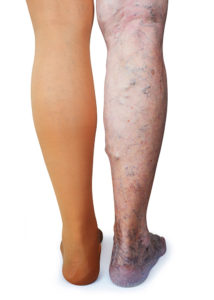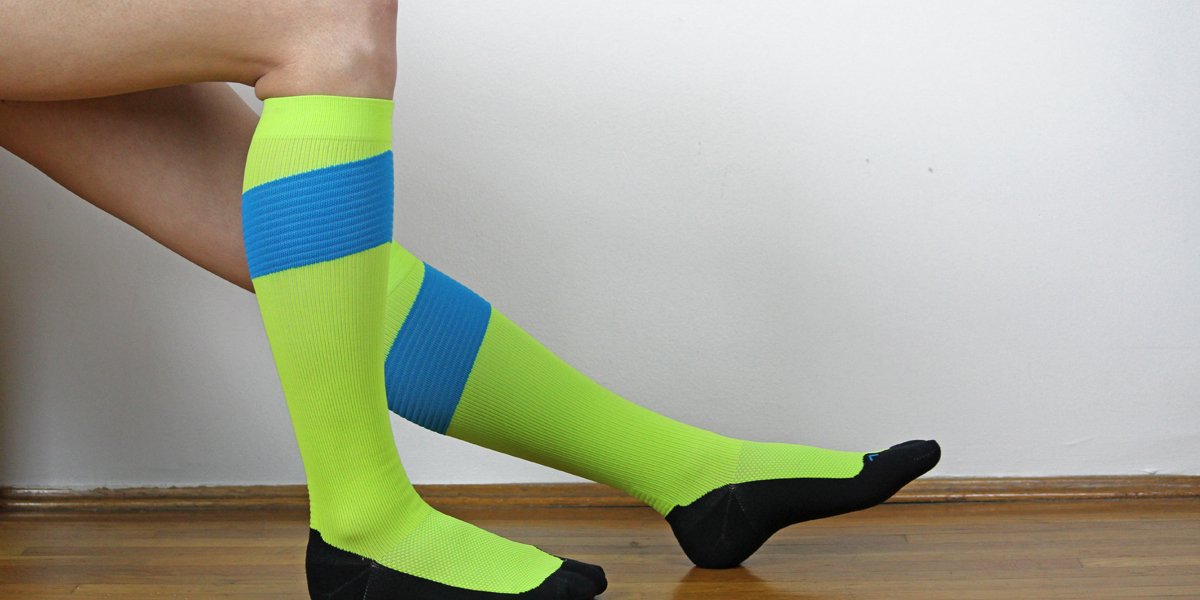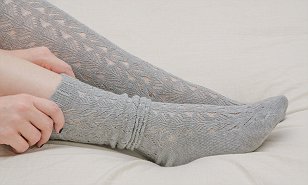Have you recently been asked to wear leg stockings, also known and compression socks?
Many people wear compression socks (aka leg socks).
Leg socks are prescribed for a variety of conditions.
Surprisingly, even those without leg issues wear them.
Their fundamental function is to enhance the circulation of blood and limit swelling in legs.
How leg Stockings Work
Leg stockings steadily constrict the muscles and veins of the leg. Ideally, these socks are firmest at the ankle region, and then it gradually lessens up the leg. The graduated leg stockings allow the flow of blood from the lower legs to the heart.
Leg Socks with a small level of compression are often sold without a particular prescription. However, stronger compression is prescribed by your health provided with specific specifications. This includes the strength of compression, the length of the sock, depending on the condition that is being treated.
Leg socks can move fluid up the leg; this disallows the collection of fluid in the ankle. Based on the need for these socks, some could wear it on both legs, while others could wear them just on one leg. Now, let’s analyze some conditions leg stockings treat and prevent:
- Varicose veins and spider veins
- Deep vein thrombosis
- Lymphedema
- Swollen and aching legs
Varicose Veins

Usually, leg stockings are the initial recommendation for varicose veins. This prevents the pooling of blood in the veins and lessens the swelling and pain in the legs. Some folks who have had surgery recently or have other treatments for their spider and varicose veins condition would need to wear compression socks after that. The prescription is to prevent the development of varicose veins. And this is especially vital if you would be engaging in an activity that will make you stand or walk for long hours. Also, for folks who are at risk of varicose veins, they are prescribed leg stockings too.
Venous Leg Ulcers

Ulcers that are linked with leg veins are regarded as venous ulcers. Varicose veins or cases of blood clots in the past can lead to venous ulcers in the lower legs often around the ankles. Leg stockings can be adopted to treat these venous ulcers and to prevent new ulcers from occurring.
Deep vein thrombosis

A physician may recommend that you wear leg socks to prevent DVT, the clotting of blood in the veins if you are at very high risk. Frequently, leg socks are used to halt clotting in people that have major surgery and for those hospitalized for any condition. There are professionally-fitted leg stockings that are sometimes recommended for the prevention of DVTs. In addition, there are leg socks for folks that travel long distances by plane.
For those that have sometimes been diagnosed with DVT, fitted leg socks can be used in preventing and treating a common complication that is regarded as a post-thrombotic syndrome that leads to progressive leg pain, skin changes, and swelling.
Lymphedema

The application of uniquely-fitted compression socks is an essential treatment for lymphedema – that is, a condition where lymph builds in the body’s tissues, leading to swelling in the legs. The leg hose would help retain the ideal shape and size of the limb. Also, these socks can be used after intensive lymphedema therapy.
Sleep Apnea

Do you have sleep difficulty due to sleep apnea? The use of leg socks can help solve this issue comfortably. It will improve the quality of sleep that you get each day. Before the application, though, speak with a physician.
Briefly, let’s analyze the types of leg socks you can pick from in any local pharmacy.
Popular Articles on ComproGear
What Level of Compression Socks Do I Need? Compression Sock Levels
Compression Socks for Nurses Best Nursing Compression Socks
What are the Best Socks for Circulation? Socks for Poor Circulation
Compression Socks for Edema How to Buy Compression Socks for Edema
Compression Socks for Swollen Feet Medical Socks for Swollen Feet
Compression Stockings mmHg Chart Compression Stockings Pressure Guide
Super Plus Size Compression Stockings Bariatric Compression Socks
Types of Leg Stocking
Leg stockings are available in a vast array of sizes, lengths, and colors. Several types are based on the level and amount of compression they give users. The level and length of compression you get from leg stockings will be dependent on your condition.
Even with its effectiveness for treating and preventing a vast array of conditions, leg socks aren’t for everyone. Therefore, it’s reasonable never to wear leg socks that are designed for someone else. If you need to wear one, your doctor will provide you with the correct type and the right size. Also, there are a few personal preferences in the features. For instance, some might prefer open or closed socks as well as other brands from the one they chose.
Your prescription is often filled by trained staff in a medical store after proper measurement. If your legs are swollen before wearing, you might be given a compression bandage that will lead up to keep your feet swelling to a minimum level before you wear.
Best Ways to Wear Leg Stocking

For wearers of stocking to have their right fit, there is a need to be measured by your doctor, pharmacist, or physiotherapist. However, there is a warning: If you have bunions or flat feet, do not wear open-toe socks. This is because the band across the foot would be uncomfortable and overly restrictive.
Before fitting a leg sock, usually, an ultrasound of the arteries in the legs will be checked. This may be important if you have suspected or known arterial disease. Leg socks must be replaced regularly at least every six months since the elastic fabric will weaken over time and might not provide the level of compression it should have provided.
Remeasure your leg whenever your socks need to be replaced. Measurements are usually taken in the morning if you want the best and right measurement. As you rise early in the morning, wear your leg stocking or replace them when your legs have minimal swelling.
The sock fabrics must distribute evenly over the legs without wrinkles, and not overly constrictive at the top. Ensure that the socks’ seams are straight and that your heel is placed in the right position. Never wear fold over the band at the peak of the socks, if you do, it will constrict the circulation of the leg.

Whenever you have a problem pulling the socks up, use rubber gloves so you can move the socks up to your legs. You can also try to apply talcum powder or moisturizers to the legs so you can move the socks more easily over the legs. If your toes begin to tingle as you wear leg stockings, remove the socks immediately, get rid of it, and consult your pharmacist and doctor. Do not modify your leg socks by cutting the fabrics; this will ultimately alter the compression.
For maximum results, keep your skin dry. Sit in a chair as you wear your socks, as this may ensure stability. The moment the socks have been worn, verify the seams and check if it runs straight up the leg and looks for wrinkling and bunching, most notably in the ankle region. Never fold the top of the socks down.
Subject to the reason you are wearing a sock, graduated leg socks do not require to be worn at night. Yet, it’s good you check with your doctor. Speak to your doctor if you have problems wearing socks. There are many reasons why some individuals complain about the leg socks they wear. Some of the reasons include:
- Weather condition when it’s worn, especially in hot weather.
- Arthritis, which could make it difficult to wear.
Sadly, more than 29% of wearers wear them incorrectly, and in fact, 20% aren’t in the know of the purpose leg stockings serve. As explained, wear them first thing in the morning before you start to work around and keep them on until you are set for bed.
Conclusively, always check your legs daily as you wear these socks. Remove them for a shower and wear them daily. For proper monitoring, you can check for skin redness, irritation, color, or skin damage. These could be a sign that your socks aren’t your fit or there is an infection in your leg. Swiftly contact your healthcare provider if you experience any of these.
Are there side effects of leg stockings? A short trip to the next subheading will answer that.
Side Effects of Leg Socks

The design of graduated leg stockings are made to be firm, and for some, getting used to them immediately might not be easy. Yet, any symptoms that could result from excessive tightness by the sock should be reported to the doctor and must be checked right away. The following are the conditions you should let your doctor know immediately:
- Tightness and pain in your legs.
- Tingling and numbness in the feet, legs, or toes.
- Change in color of your toes, most importantly, blue or pale color.
If you suffer arterial blood supply or nerves in your legs, leg socks might not be for you. They must not be used in folks with peripheral neuropathy or chronic peripheral vascular diseases.
Leg Socks aren’t like the regular socks you can find around. They are usually prescribed with specific specifications and demand experts to fit. Some several tricks and tips would help you use and care for them; thus, they can provide you with the intended therapeutic use so that you can lessen the risk of any side effects.
Caring for Your Leg Stockings
Caring for your leg stockings is vital. The journey begins by understanding what manufacturers say. Individual manufacturers provide laundry details that users must follow. So, before you begin the use, check labels and read thoroughly the care guide that is written on the labels.
But ideally, after washing with a mild soap, you should dry your socks under a shade and take it entirely off direct heat or sun. Also, it is not proper to dry stocking in a clothes dryer. Always wear rubber gloves whenever you want to wear your leg socks to prevent your jewelry or fingernails from snagging it. It’s nice that you must trim your feet regularly, to wholly eradicate the chances of snagging your socks.
Furthermore, to prevent damaging your socks earlier than its expected lifespan, regularly wear shoes or slippers over them (especially when you are home), Torn socks will need to be replaced. Socks would also need to be changed if you noticed any wrinkle and bunching or sliding down, or they overly stretch. If you insist on wearing it with these conditions, you will not get the right compression.
Always wear your socks as prescribed. You might be asked to wear them early in the morning. You might also be told to wear them till it’s time for bed. And in fact, some could even prescribe that you should wear them for the entire day and night.
If you miss wearing your socks, your legs will swell. For that reason, you might find it difficult to wear that particular socks again. When your leg swells, you would need to take steps and limit the swelling. You can do this by lying down and elevating your legs or wearing compression bandages throughout the night. But if the swelling continues for more than two days, consult your healthcare provider, or discuss any rare problem you are wrestling with.
Conclusion
Have you found what you wanted to know about leg socks? I’m convinced you would have. Likely you have some questions not discussed here; it is best to speak with your physician. Those concerns could be some of the questions only medical professionals can provide answers to. And the provision of an answer could be after you have been thoroughly checked.
Either you have a medical need for leg socks, you want to try them out for increased athletic performance, or you want them for your profession, as you head out to get to your leg stockings, insist on the right size and the pattern of your choice.
This page last updated December 14, 2022
